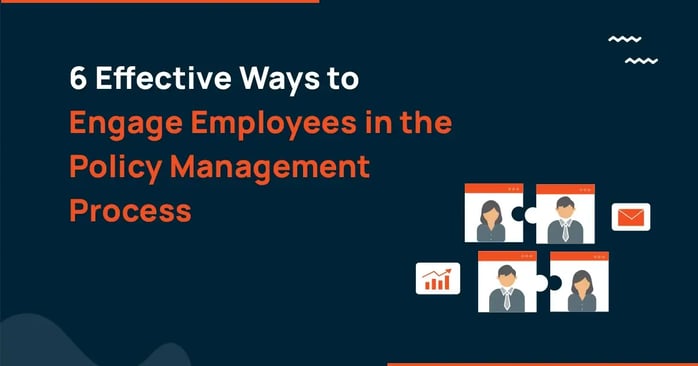Are you ready to learn more?
Talk to one of our policy management experts today!
Policy management resources, best practices articles, guides and how-to's can help optimize your processes.
Contract management resources, articles, guides and how-tos can help you improve efficiency.
Resources, best practices, articles, guides, and how-tos to effectively manage incidents.
Articles and guides on conflict of interest disclosure on how to properly handle potential conflicts.
Strategies on building frameworks for managing risks and staying up to date with regulatory developments.

Businesses, like your organization , know that attracting and retaining top talent is essential to a business’s livelihood — which is why employee engagement has become increasingly important.
How do you know employees are engaged in their work? You should feel a buzz in the workplace, as employees bring energy to their jobs and feel personally involved in the company’s wins and setbacks. Not only are engaged employees motivated, but they’re also focused and engrossed in their work tasks, which leads them to take ownership of their jobs. In doing so, they become dedicated to their roles and your company.
Building employee engagement (and retention) starts from their first day at the office, when you introduce them to your company’s culture through sharing the company’s policies and procedures. A company’s policies give employees an immediate sense of what the company stands for — its values, business ethics and personality. In turn, sound policies reassure employees, giving them the confidence and security to work to their full potential.
By involving employees in the policy creation, review and renewal process, you give your employees a stake in the company’s growth and direction — you show them that their opinions matter, allow them to help drive who the company wants to be and encourage participation — and thus increase employee engagement.
How can you easily include your employees in the policy management process?
Related Article: 3 Ways Policy Management Software can Improve Policy Distribution
Related Article: Policy And Procedure Management Compliant Employees
While it may seem like asking more employees to get involved in the policy management process would initially slow or bottleneck the system, their participation doesn’t necessarily make the process any less efficient. By automating your policy management system with ConvergePoint’s Policy Management Software, you streamline your company’s current system, while encouraging employee engagement and giving employees greater access to company policies.
Automated Policy Management Software enables you to create automated workflows, ensuring designated employees are cued to create, review and approve policies. Policies are kept in one central document repository so employees can easily access and quickly find information they’re looking for. The software also automates distribution and employee acknowledgment of policies, ensuring employees receive email notification when a new policy is ready to be reviewed and are tested to ensure they’ve read and understood the policy.
Protect intellectual property, manage grants, preserve student privacy, and outline ethical procedures.
Establish procurement policies, outline employee safety procedures, specify quality control of products, and satisfy changing regulatory guidelines.
Adhere to HIPAA, HITECH, ICD 9, ICD 10, and FDR CFR regulations, safeguard patient information, and manage healthcare compliance processes.
Comply with SEC, FDIC, FINRA, OCC, CFTC, and Federal Reserve regulations, greater transparency, and manage external scrutiny.
Improve organizational transparency, underwrite policies and procedures, mitigate risk centers, and reduce volatility.
Avoid heavy penalties from local, regional, state and federal regulators, manage potential risks, and enhance employee safety and training retention.
Abide by FAA, DOT, FMCSA, FRA and FTA regulations, educate drivers and third party vendors on guidelines, and streamline overall compliance.
Are you ready to learn more?
Talk to one of our policy management experts today!